A Graphene-Based Stopband FSS with Suppressed Mutual Coupling in Dielectric Resonator Antennas
Abstract
1. Introduction
2. Design and Methods
3. Measurement and Results
4. Conclusions
Author Contributions
Funding
Institutional Review Board Statement
Informed Consent Statement
Data Availability Statement
Conflicts of Interest
References
- Ludwig, A. Mutual coupling, gain and directivity of an array of two identical antennas. IEEE Trans. Antennas Propag. 1976, 24, 837–841. [Google Scholar] [CrossRef]
- Wei, K.; Li, J.Y.; Wang, L.; Xing, Z.J.; Xu, R. Mutual Coupling Reduction by Novel Fractal Defected Ground Structure Bandgap Filter. IEEE Trans. Antennas Propag. 2016, 64, 4328–4335. [Google Scholar] [CrossRef]
- Li, Z.; Du, Z.; Takahashi, M.; Saito, K.; Ito, K. Reducing mutual coupling of MIMO antennas with parasitic elements for mobile terminals. IEEE Trans. Antennas Propag. 2012, 60, 473–481. [Google Scholar] [CrossRef]
- Assimonis, S.D.; Yioultsis, T.V.; Antonopoulos, C.S. Design and optimization of uniplanar EBG structures for low profile antenna applications and mutual coupling reduction. IEEE Trans. Antennas Propag. 2012, 60, 4944–4949. [Google Scholar] [CrossRef]
- Velan, S.; Sundarsingh, E.F.; Kanagasabai, M.; Sarma, A.K.; Raviteja, C.; Sivasamy, R.; Pakkathillam, J.K. Dual-band EBG integrated monopole antenna deploying fractal geometry for wearable applications. IEEE Antennas Wirel. Propag. Lett. 2015, 14, 249–252. [Google Scholar] [CrossRef]
- Gao, G.P.; Hu, B.; Wang, S.F.; Yang, C. Wearable Circular Ring Slot Antenna with EBG Structure for Wireless Body Area Network. IEEE Antennas Wirel. Propag. Lett. 2018, 17, 434–437. [Google Scholar] [CrossRef]
- Zhang, S.; Pedersen, G.F. Mutual Coupling Reduction for UWB MIMO Antennas with a Wideband Neutralization Line. IEEE Antennas Wirel. Propag. Lett. 2016, 15, 166–169. [Google Scholar] [CrossRef]
- Farahani, M.; Akbari, M.; Nedil, M.; Denidni, T.A. Mutual coupling reduction in dielectric resonator MIMO antenna arrays using metasurface orthogonalize wall. In Proceedings of the 2017 11th European Confonference on Antennas and Propagation, EUCAP 2017, Paris, France, 19–24 March 2017; Volume 16, pp. 985–987. [Google Scholar] [CrossRef]
- Karimian, R.; Kesavan, A.; Nedil, M.; Denidni, T.A. Low-Mutual-Coupling 60-GHz MIMO Antenna. IEEE Antennas Wirel. Propag. Lett. 2017, 16, 373–376. [Google Scholar] [CrossRef]
- Hassan, T.; Khan, M.U.; Attia, H.; Sharawi, M.S. An FSS Based Correlation Reduction Technique for MIMO Antennas. IEEE Trans. Antennas Propag. 2018, 66, 4900–4905. [Google Scholar] [CrossRef]
- Ye, F.; Song, C.; Zhou, Q.; Yin, X.; Han, M.; Li, X.; Zhang, L.; Cheng, L. Broadband microwave absorbing composites with a multi-scale layered structure based on reduced graphene oxide film as the frequency selective surface. Materials 2018, 11, 1771. [Google Scholar] [CrossRef]
- Sarabandi, K.; Behdad, N. A frequency selective surface with miniaturized elements. IEEE Trans. Antennas Propag. 2007, 55, 1239–1245. [Google Scholar] [CrossRef]
- Vallecchi, A.; Langley, R.J.; Schuchinsky, A.G. Voltage Controlled Intertwined Spiral Arrays for Reconfigurable Metasurfaces. Int. J. Antennas Propag. 2015, 2014, 1–10. [Google Scholar] [CrossRef]
- Li, L.; Wang, J.; Ma, H.; Wang, J.; Feng, M.; Du, H.; Yan, M.; Zhang, J.; Qu, S.; Xu, Z. Achieving all-dielectric metamaterial band-pass frequency selective surface via high-permittivity ceramics. Appl. Phys. Lett. 2016, 108, 122902. [Google Scholar] [CrossRef]
- Wang, Z.; Wang, H.; Wu, Z.; Sun, L.; Zhang, Y. Switchable all-dielectric frequency selective surface based on dielectric resonators. IET Microw. Antennas Propag. 2017, 11, 2124–2128. [Google Scholar] [CrossRef]
- Mencarelli, D.; Pierantoni, L.; Stocchi, M.; Bellucci, S. Efficient and versatile graphene-based multilayers for em field absorption. Appl. Phys. Lett. 2016, 109. [Google Scholar] [CrossRef]
- Bernety, H.M.; Yakovlev, A.B. Mutual coupling reduction between neighboring strip dipole antennas using confocal elliptical metasurfaces. In Proceedings of the 2015 9th European Conference on Antennas and Propagation, EuCAP 2015, Lisbon, Portugal, 12–17 April 2015; Volume 63, pp. 1554–1563. [Google Scholar]
- Moreno, G.; Mehrpour Bernety, H.; Yakovlev, A.B. Reduction of Mutual Coupling between Strip Dipole Antennas at Terahertz Frequencies with an Elliptically Shaped Graphene Monolayer. IEEE Antennas Wirel. Propag. Lett. 2016, 15, 1533–1536. [Google Scholar] [CrossRef]
- Xu, B.; Gu, C.; Li, Z.; Liu, L.; Niu, Z. A novel absorber with tunable bandwidth based on graphene. IEEE Antennas Wirel. Propag. Lett. 2014, 13, 822–825. [Google Scholar] [CrossRef]
- Zhang, X.; Wu, W.; Li, C.; Wang, C.; Ma, Y.; Yang, Z.; Sun, G.; Yuan, N. A dual-band terahertz absorber with two passbands based on periodic patterned graphene. Materials 2019, 12, 3016. [Google Scholar] [CrossRef] [PubMed]
- Chen, H.; Lu, W.B.; Liu, Z.G.; Zhang, J.; Zhang, A.Q.; Wu, B. Experimental demonstration of microwave absorber using large-area multilayer graphene-based frequency selective surface. IEEE Trans. Microw. Theory Tech. 2018, 66, 3807–3816. [Google Scholar] [CrossRef]
- Yi, D.; Wei, X.C.; Xu, Y.L. Tunable Microwave Absorber Based on Patterned Graphene. IEEE Trans. Microw. Theory Tech. 2017, 65, 2819–2826. [Google Scholar] [CrossRef]
- Song, R.; Wang, Z.; Zu, H.; Chen, Q.; Mao, B.; Wu, Z.P.; He, D. Wideband and low sidelobe graphene antenna array for 5G applications. Sci. Bull. 2020. [Google Scholar] [CrossRef]
- Fang, R.; Song, R.; Zhao, X.; Wang, Z.; Qian, W.; He, D. Compact and low-profile uwb antenna based on graphene-assembled films for wearable applications. Sensors 2020, 20, 2552. [Google Scholar] [CrossRef]
- Syed, I.S.; Member, S.; Ranga, Y.; Matekovits, L.; Member, S.; Esselle, K.P.; Member, S.; Hay, S.G.; Member, S. A Single-Layer Frequency-Selective Surface for. IEEE Trans. Electromagn. Compat. 2014, 56, 1404–1411. [Google Scholar] [CrossRef]
- Zhou, Q.; Zha, S.; Liu, P.; Liu, C.; Bian, L.; Zhang, J.; Liu, H.; Ding, L. Graphene based controllable broadband terahertz metamaterial absorber with transmission band. Materials 2018, 11, 2409. [Google Scholar] [CrossRef]
- Zhao, P.C.; Zong, Z.Y.; Wu, W.; Li, B.; Fang, D.G. An FSS Structure Based on Parallel LC Resonators for Multiband Applications. IEEE Trans. Antennas Propag. 2017, 65, 5257–5266. [Google Scholar] [CrossRef]
- Zheng, Q.R.; Fu, Y.Q.; Yuan, N.C. A novel compact spiral electromagnetic band-gap (EBG) structure. IEEE Trans. Antennas Propag. 2008, 56, 1656–1660. [Google Scholar] [CrossRef]
- Savia, S.B.; Parker, E.A. Equivalent circuit model for superdense linear dipole FSS. IEE Proc. Microw. Antennas Propag. 2003, 150, 37–42. [Google Scholar] [CrossRef]
- Duffy, A.P.; Martin, A.J.M.; Orlandi, A.; Antonini, G.; Benson, T.M.; Woolfson, M.S. Feature Selective Validation (FSV) for validation of computational electromagnetics (CEM). Part I—The FSV method. IEEE Trans. Electromagn. Compat. 2006, 48, 449–459. [Google Scholar] [CrossRef]
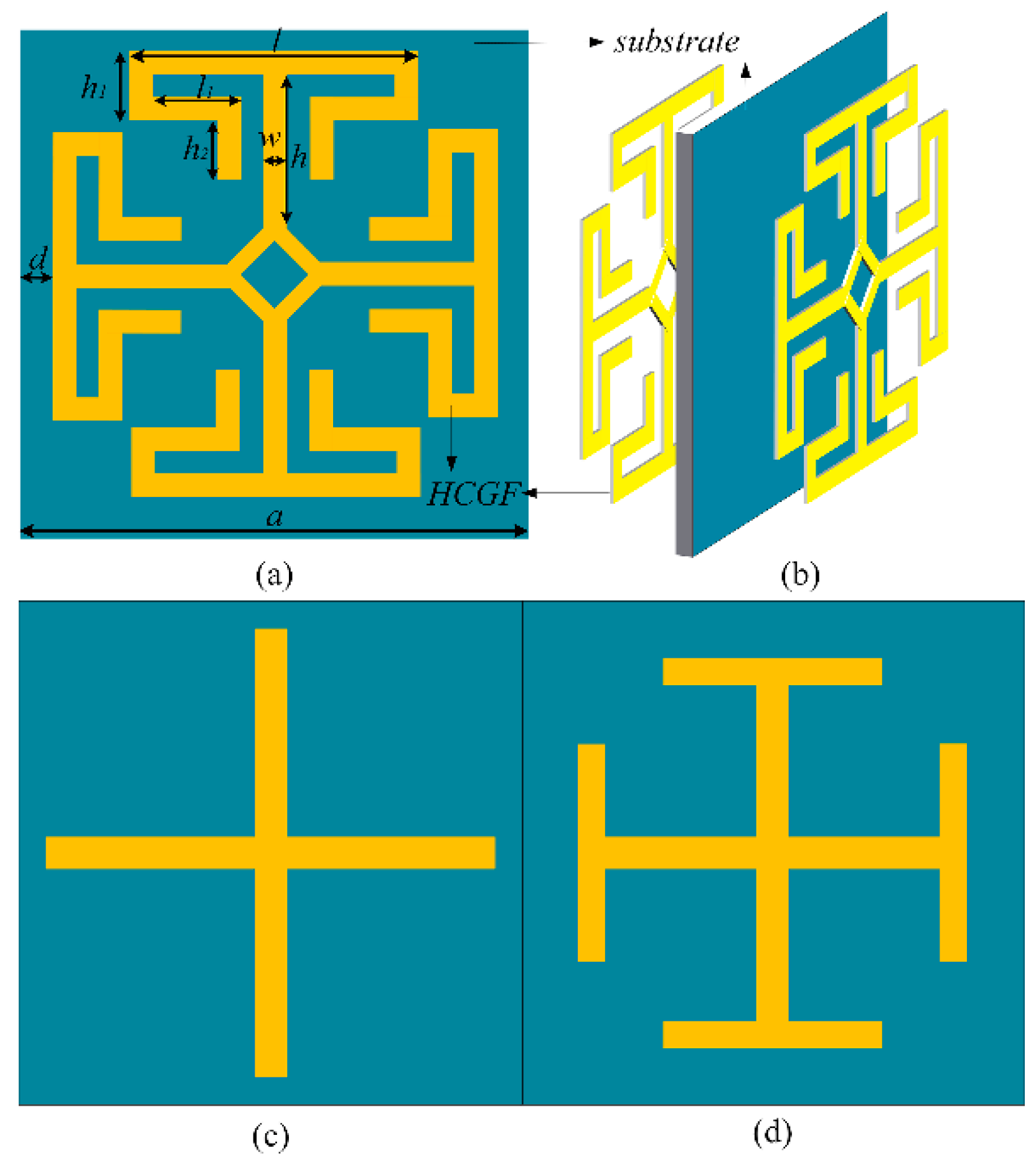

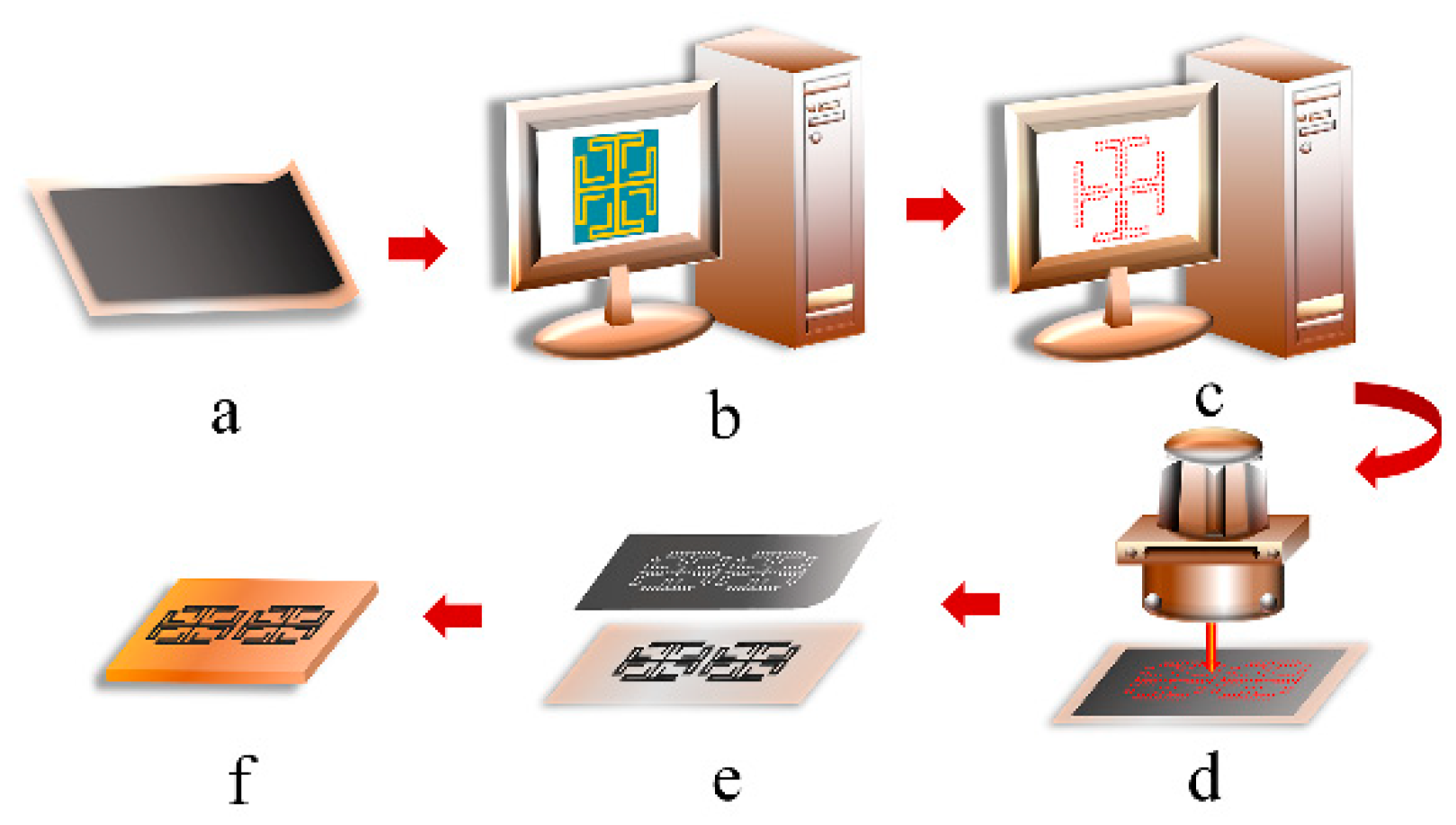

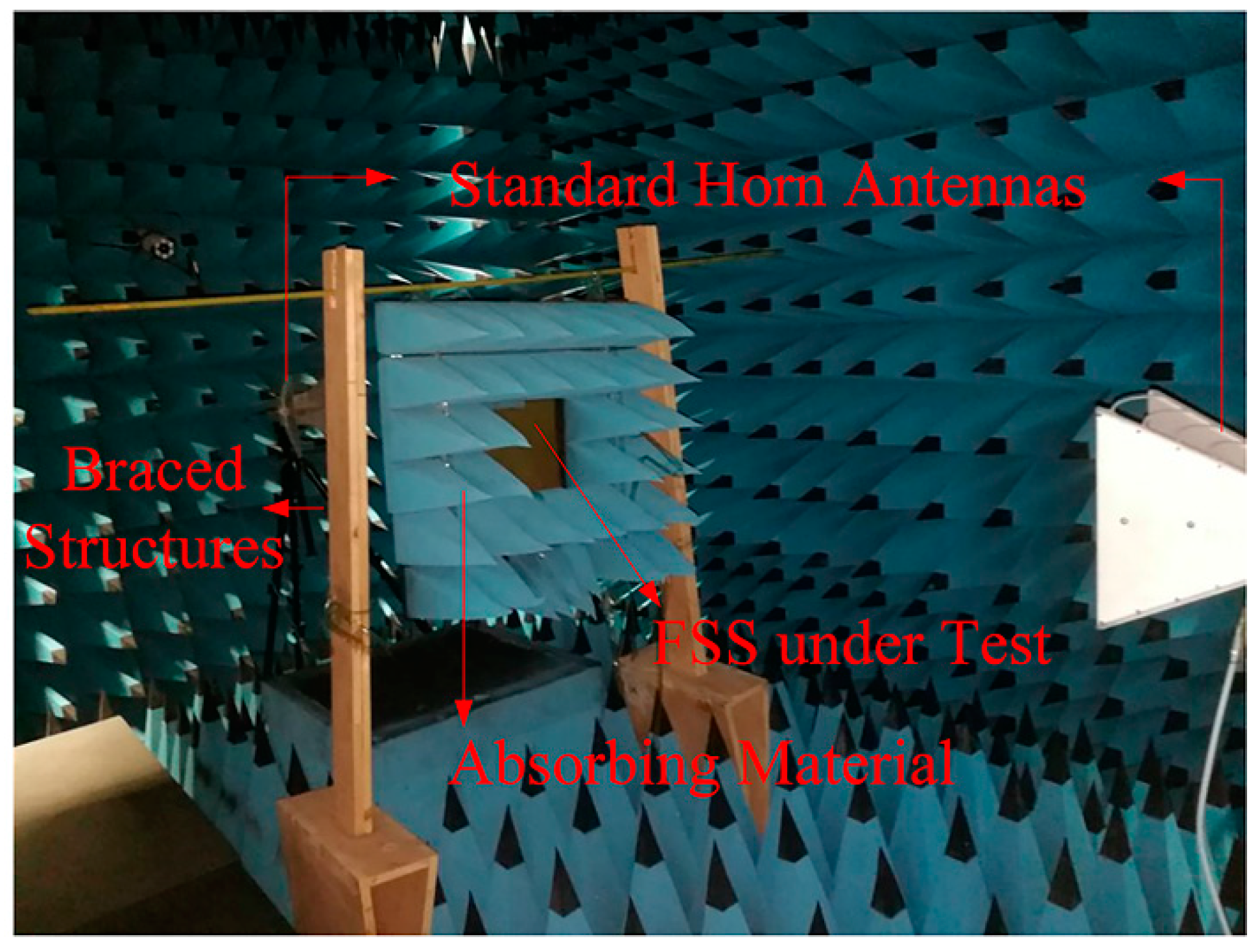
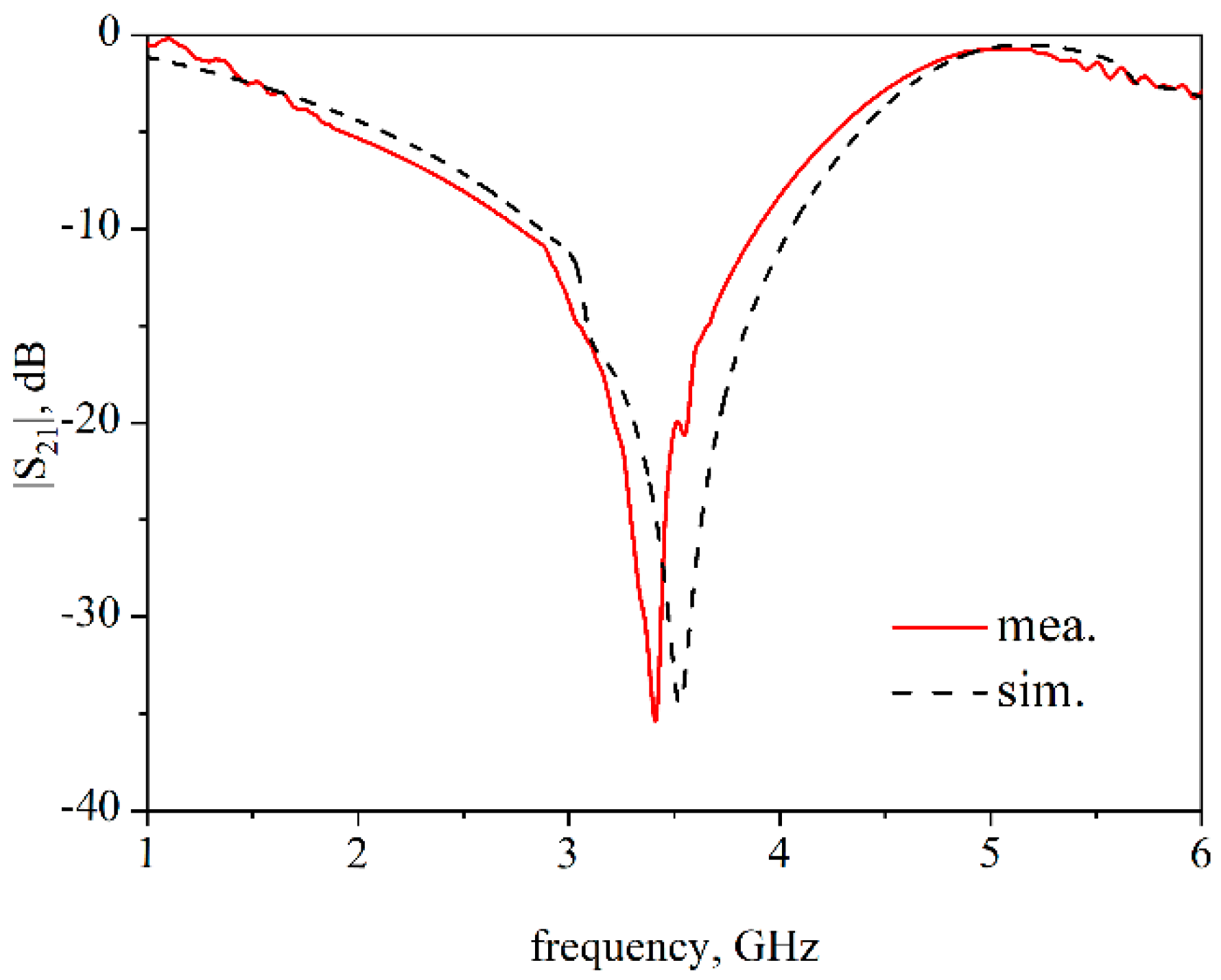


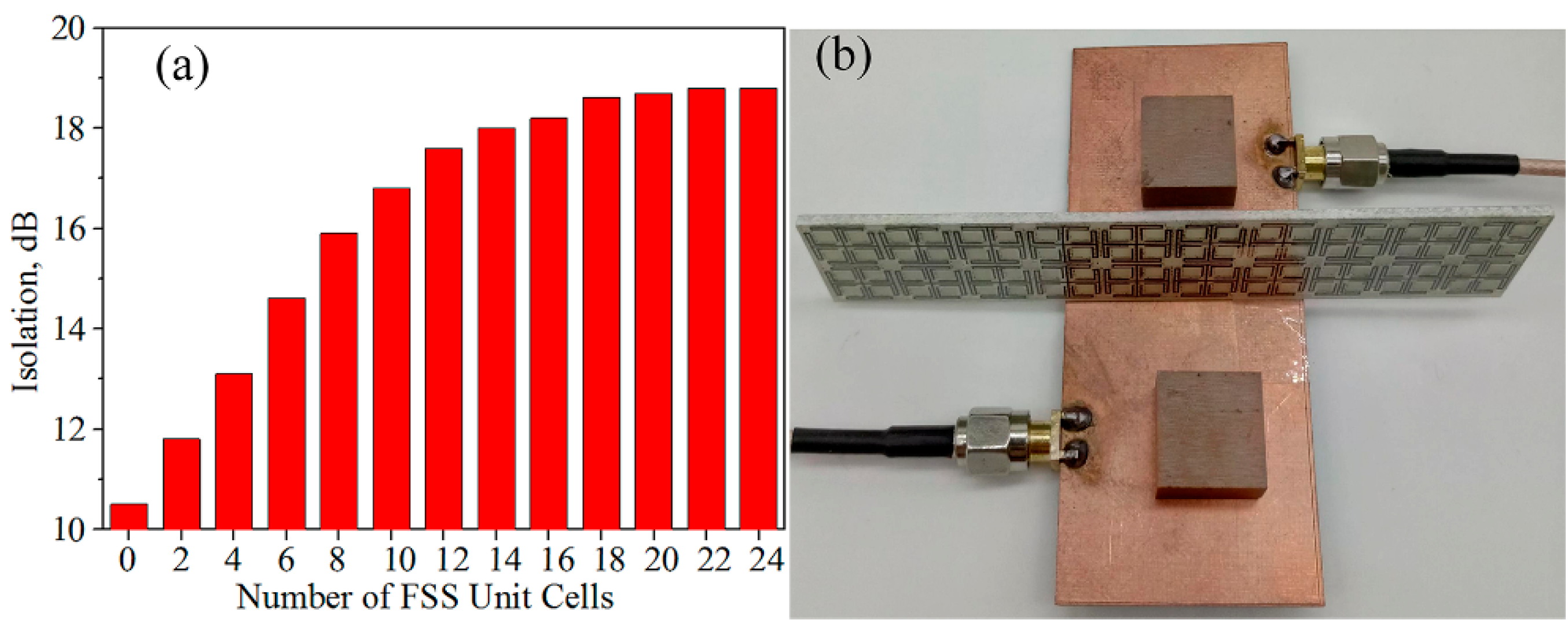
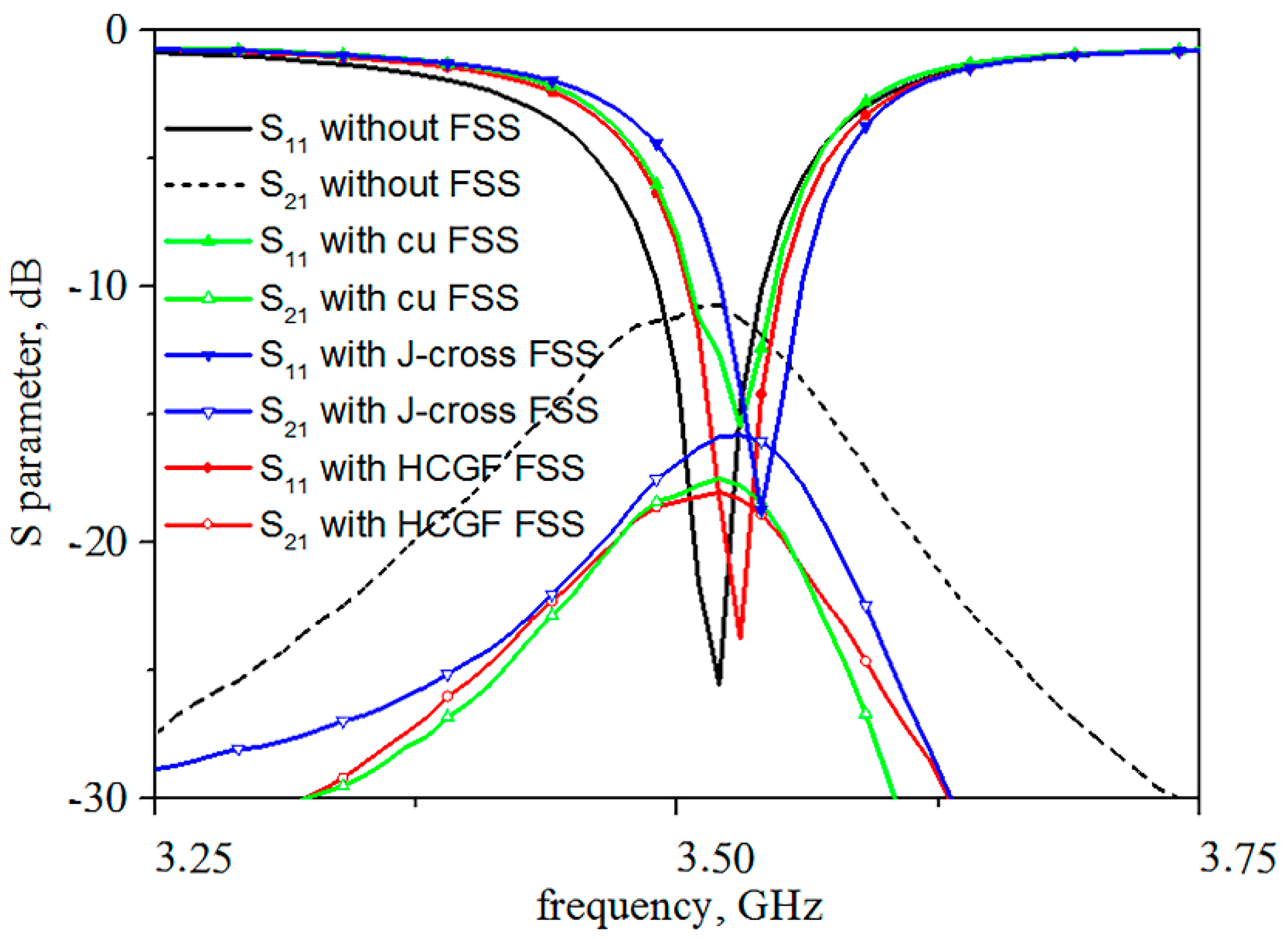

Publisher’s Note: MDPI stays neutral with regard to jurisdictional claims in published maps and institutional affiliations. |
© 2021 by the authors. Licensee MDPI, Basel, Switzerland. This article is an open access article distributed under the terms and conditions of the Creative Commons Attribution (CC BY) license (http://creativecommons.org/licenses/by/4.0/).
Share and Cite
Qian, W.; Xia, W.; Zhou, W.; Song, R.; Zhao, X.; He, D. A Graphene-Based Stopband FSS with Suppressed Mutual Coupling in Dielectric Resonator Antennas. Materials 2021, 14, 1490. https://doi.org/10.3390/ma14061490
Qian W, Xia W, Zhou W, Song R, Zhao X, He D. A Graphene-Based Stopband FSS with Suppressed Mutual Coupling in Dielectric Resonator Antennas. Materials. 2021; 14(6):1490. https://doi.org/10.3390/ma14061490
Chicago/Turabian StyleQian, Wei, Wei Xia, Wenqing Zhou, Rongguo Song, Xin Zhao, and Daping He. 2021. "A Graphene-Based Stopband FSS with Suppressed Mutual Coupling in Dielectric Resonator Antennas" Materials 14, no. 6: 1490. https://doi.org/10.3390/ma14061490
APA StyleQian, W., Xia, W., Zhou, W., Song, R., Zhao, X., & He, D. (2021). A Graphene-Based Stopband FSS with Suppressed Mutual Coupling in Dielectric Resonator Antennas. Materials, 14(6), 1490. https://doi.org/10.3390/ma14061490







